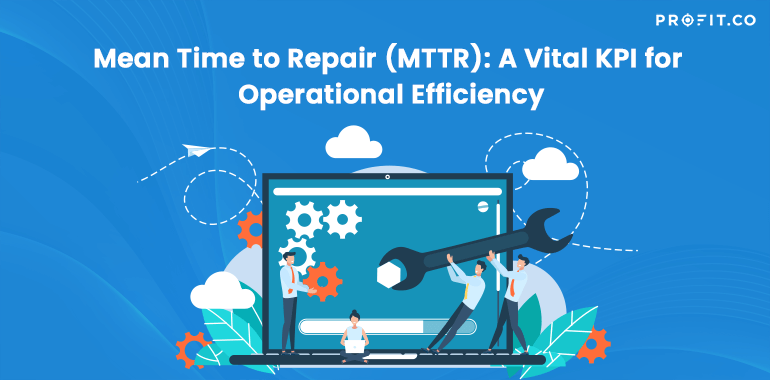In an era where industrial efficiency has become the linchpin of success, the Mean Time to Repair (MTTR) KPI has emerged as a vital benchmark, reflecting a global trend toward predictive maintenance and data-driven decision-making. With the recent rise in automation and AI-driven analytics, MTTR has transformed from a simple measure into a strategic tool for cutting-edge manufacturing processes.
The Mean Time to Repair (MTTR) is one of the most critical Key Performance Indicators (KPIs) used in various industries to measure the efficiency of maintenance processes. This metric provides insights into how quickly an organization can respond to and repair equipment failures, thereby minimizing downtime and maximizing productivity.
Ready to explore the secret behind seamless operations? Dive into this blog post, where we’ll help you understand the MTTR KPI that keeps the wheels of the industry turning. With easy-to-follow formulas and tangible real-world OKR examples, we’ll help you bridge the crucial connection between maintenance and productivity. Let’s embark on this journey to operational excellence together!
Understanding Mean Time to Repair (MTTR)
MTTR refers to the average time it takes to diagnose a failure and restore the affected equipment or system to its full operational capacity. It is an essential indicator of maintenance performance and provides valuable insights into the efficiency of the repair processes, workforce productivity, and overall system reliability.
The most precious resource we have is time
Importance of MTTR in Operations
The Mean Time to Repair (MTTR) is an indispensable metric in the world of operations, as it directly pertains to the efficiency and effectiveness of maintenance processes. Its importance in operations is manifold, reflecting both strategic and practical dimensions as described below
Performance Evaluation
MTTR offers an accurate picture of how long a system is non-operational due to failures. It helps in assessing the effectiveness of the maintenance team
Resource Allocation
By understanding the average time needed for repairs, an organization can optimize resource allocation, ensuring that personnel and spare parts are available when needed.
Downtime Reduction
By monitoring and working on reducing MTTR, an organization can minimize downtime, thereby increasing overall operational efficiency.
Cost Control
Lower MTTR means less unproductive time, leading to cost savings, particularly in industries where downtime can lead to substantial financial losses.
MTTR Formula to calculate
The MTTR can be calculated using the following formula:

Total Downtime
The cumulative time taken for all repairs within a specific period is usually measured in hours.
Number of Repairs
The total number of repair activities performed within the same period.
Want a comprehensive look at the Mean Time to Repair KPI?
Real-World Example to start working on MTTR KPI
Consider a manufacturing plant where a crucial piece of machinery broke down five times in a month. Here’s the downtime for each repair:
Repair 1: 2 hours
Repair 2: 1 hour
Repair 3: 1.5 hours
Repair 4: 2.5 hours
Repair 5: 3 hours
Total Downtime = 2 + 1 + 1.5 + 2.5 + 3= 10 hours
Number of Repairs= 5
MTTR= 10/5 = 2hours
The MTTR for this equipment is 2 hours, meaning that on average, it took 2 hours to repair the machinery during the assessed period
Conclusion
Mean Time to Repair (MTTR) is a powerful KPI that provides valuable insights into the efficiency of maintenance processes. By understanding and actively working to reduce MTTR, organizations can enhance productivity, minimize downtime, and achieve cost savings.
Continuously monitoring and striving to improve MTTR aligns with the proactive maintenance approach, enabling businesses to anticipate potential failures and address them before they escalate into more severe issues. In today’s highly competitive and demanding industrial landscape, leveraging MTTR as a strategic tool can lead to a more resilient and successful operation.

